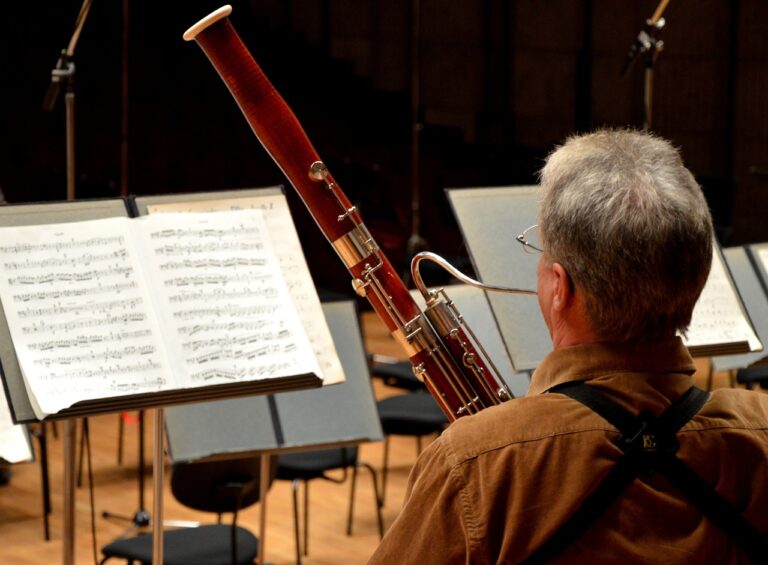Caring For and Maintaining Your Oboe and Bassoon Reeds: A Handy Guide

Learning how to look after your double reeds as a young oboist or bassoonist is critical for prolonging the life of your reeds and ensuring they sound as good as possible.
Oboe and bassoon reeds are the most fragile and sensitive types of woodwind reeds around. They are made from a type of tall perennial cane called ‘Arundo Donax’. One piece of cane is folded over and split to create the ‘double’ style of reed. These two pieces are bound together either by a metal and cork ‘staple’ (oboe) or by a ‘turban’ of thread (bassoon.) These two pieces of cane are scraped to create the profile of the reed, and this profile is responsible for the response and playability of the reed.
Double reeds are very sensitive to things such as temperature, humidity, altitude, and moisture. As a result, there are a number of precautions double reed players can take to prolong the life of their reeds and prevent cracks, chips, and damage to their beloved and precious reeds.
Before Playing
Store in Appropriate Reed Case
One of the most important thing required to look after a double reed is to store it properly. Reed cases for bassoon and oboe are the only way to store reeds. Good reed cases are with made with a sturdy outer material (wood, reinforced plastic, fibreglass), a soft inner lining, and individual divisions for each reed to prevent movement within the case. These are perfect for protecting your reeds from damage. It’s also important that reed cases have small vents on the sides to promote circulation and prevent moisture and bacteria growth.
Inspect for Damage
There’s nothing worse than getting ready to play on a reed only to realise after a few minutes that the reed is cracked or chipped. How upsetting! Carefully insert a plaque into the reed and bend it gently towards yourself to reveal any hidden cracks or chips. Turn the reed around and check the other side in the same way. If no cracks or chips appear, you’re good to go!
Soak the Reed Before Playing
Playing on a dry reed straight from the box is very tricky! Not only is the reed hard and unresponsive, but the un-moistened cane will also have no flexibility and will not respond to the air being blown through it. Soaking the reed briefly before playing will ensure the cane is pliable enough to vibrate when blown through. Some experts recommend soaking a reed in clean, distilled water for roughly thirty seconds before playing. Others, however, recommend simply soaking the reed in the mouth. It is important not to oversoak the reed as it will become waterlogged, and the cane will become vascular and swollen.

Blow and Crow
It’s important to check the health and robustness of a cane reed by blowing the reed on its own, before it is attached to the instrument. A good reed will blow multiple notes at once (a ‘multiphonic’) and will sound like a ‘crow’, or a ‘squawk’. If your reed does not ‘crow’ with much power, seek the help of a teacher or professional who can adjust the aperture and hardness of the reed to allow it to crow.
Check the Opening
After soaking and crowing the reed, check the aperture of the two blades. If the reed is too open, the reed will be difficult to blow through. Gently pinch the blades of the cane together at the tip of the reed and wiggle the reed ever so slightly to press the blades together. If the reed is too closed, the cane will feel clamped shut and very little air will pass between the blades. Squeeze the cane gently near the wire to create more space between the blades of cane. If the reed is still too closed or too open, consult a teacher or professional about possibly rewiring the reed.
During Playing
Handle the Reed Carefully!
Being so fragile, reeds are easily compromised by bumping or knocking them against anything. Be sure only to touch the staple or turban when placing the reed on the instrument (don’t force a reed on by the cane or the tip!) and put away into a reed case immediately after using.
Keep Moistened During Periods of Rest
If you have many, many bars rest (or are even ‘tacet’ for a whole movement!), you can keep your reed in playing condition by soaking periodically until you’re reading to play again. This can be done either in the mouth or soaked in a small pot of distilled water.
Rotate Reeds During Playing
It’s a good idea to have multiple reeds and rotate them during practice and performance. This allows each reed to dry out between uses and extends their lifespan.
After Playing

Remove Excess Moisture from Reed
Excess moisture from reeds can be removed by blowing from the bottom of the reed. The ‘bottom’ is the opening of the staple for an oboe reed, and the turban of a bassoon reed. The reed should then be gently wiped on a cleaning swab. If there is any debris inside the reed, a clean pipe cleaner will remove this debris without damaging the cane.
Inspect for Damage
Just as you inspect the reed before playing, it’s important to double check it afterwards also.
Place Back in Reed Case
All reeds should go immediately back into the reed case from whence they came after playing. Leaving a reed on a music stand or even on the instrument can increase the possibility of injury or damage befalling the reed.
Get In Touch!
We here at WA Music have been selling and maintaining reeds for years, and we also have a dedicated double reed specialist on staff. We would be more than happy to answer any questions you may have regarding how to look after your double reeds. For any questions about reed maintenance and adjustment, contact us at sales@wamusic.com.au or (08) 9244 9559!
